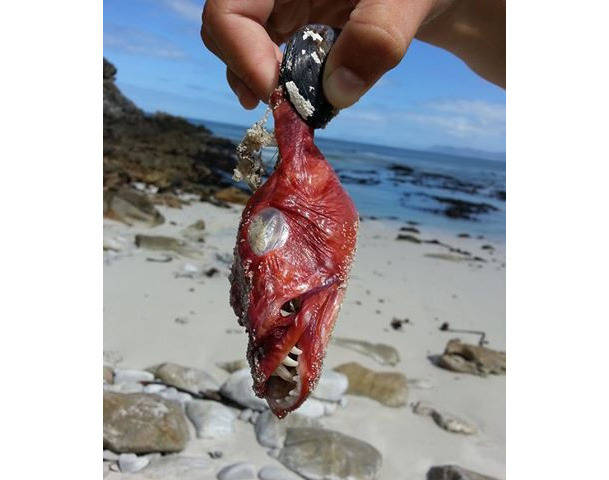
The weird looking creature is fish-like but with huge teeth and its head appears far too big for its tiny body.
According to the Afrikaans daily Die Burger, Visser denies that the image is a joke and the newspaper took it on themselves to send the photo to the South African Institute for Aquatic Biodiversity (SAIAB) in Grahamstown for verification.
The paper quotes Alan Whitfield, chief SAIAB scientist as saying that just because the creature was found on a beach, does not necessarily mean it is a fish. Whitfield drew attention to the fact that the creature in the image has no fins.
According to the experts, theories vary. Some speculate that the creature could be some kind of mutated species. Others say that as the head and jaws are so out of proportion with the creature's body, it could be made up of several different creatures. The example they gave was a puffer fish that had eaten a mussel (as it looks like a mussel shell in Visser's hand in the photo).
According to Professor Charles Griffiths of the University of Cape Town's Department of Biological Science, the creature could be a Klipsuier or Rocksucker (Chorisochismus dentex), a type of clingfish, that has dried out on the sand, which would apparently change its appearance drastically. This image does resemble the find to a certain extent.
This type of fish is the only one of its genus that is to be found along the South African and Namibian coastline, can reach about a foot in length and apparently has large teeth, to allow it to feed on mussels and limpets clinging to the rocks.
However, all of this is just theory at work. According to experts the best way to determine exactly what it is would have been to genetically analyse the specimen. However, unfortunately, Visser did not keep the weird find and "threw it back," so to speak, so we will never actually know.



A stillborn shark